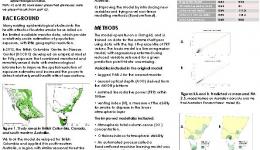David Bowman is a fire ecologist who is developing a new discipline of pyrogeography. A feature of pyrogeography is a synthetic understanding of landscape burning that unites human, physical and biological dimensions of fire: Exemplars of this approach has been his research into: global fire regimes, the history and ecology of indigenous landscape burning, and the health effects of biomass smoke. He is committed to translating his research to affect management outcomes and shape policy concerning prescribed burning, management of the wildland-urban interface and management of carbon in forested landscapes.
Blog posts on Views & Visions
Project leadership
Supervisory roles
Research team
| Type | Project | Research team |
|---|---|---|
| Quick response funding | Immediate post-fire vegetation re-measurement of TERN plots burnt during 2015/16 fire season | dbowman |
| Tactical Research Fund | Using pre and post fire LiDAR to assess the severity of the 2019 Tasmanian Bushfires | sleonard, dtaylor, dbowman, gwilliamson, sbaker, rharris, gjordan, alucieer, twardlaw, dturner, ckolden |
| Quick response funding | Post-fire impact assessment of Tasmanian Sphagnum bogs | dturner, gwilliamson, snichols, dbowman |


























